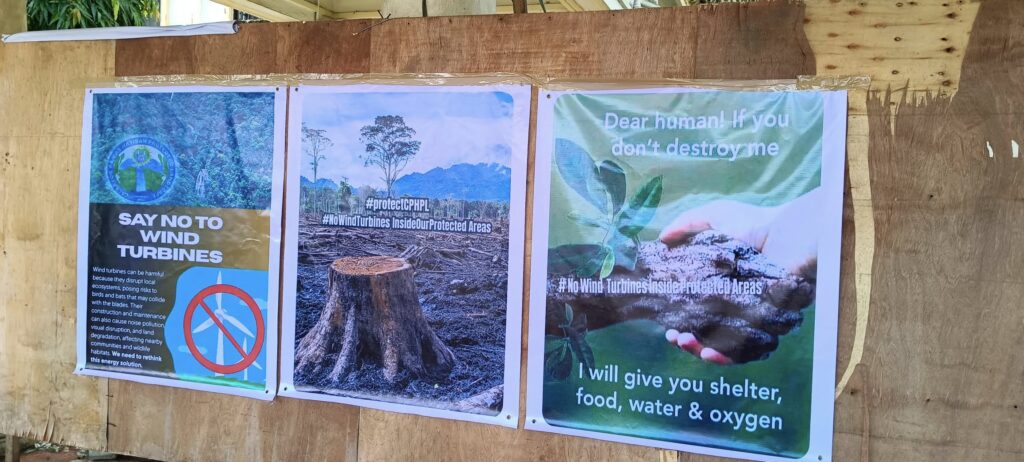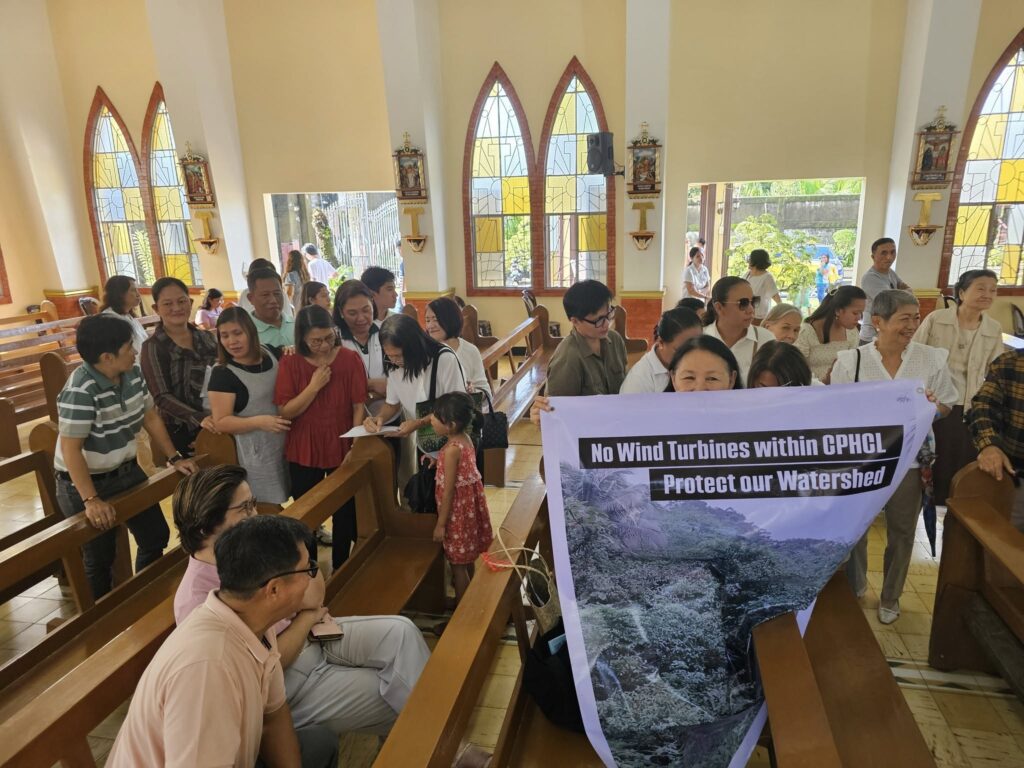CALBAYOG CITY, Samar — A fierce environmental battle is now fully engaged here, as ordinary citizens launch a sweeping signa ture campaign to derail a massive wind power project. Local folks are deeply concerned the plan by Gemini Wind Energy Corp. (GWEC) to install 37 wind turbines, with 13 of them slated to be erected within the protected Calbayog Pan-as Hayiban Protected Landscape (CPHPL), spells irreversible disaster for their main watershed.
The project was granted an Environmental Compliance Certificate (ECC) by the DENR Regional Office on September 12, 2025.

The resistance, spearheaded by the Save Calbayog Rivers Foundation – a Concerted Effort (SACRIFICE), isn’t against clean energy itself. Their fear is rooted in the extensive construction needed for roads and power lines, which they argue will force the felling of thousands of trees, destabilize the forest, and ultimately destroy the city’s sole water source. Recent, heavy flooding in Calbayog has only intensified these worries, driving more residents to personally volunteer and sign the petition.
The Fight for the Forest Sanctuary
On the ground, Ms. Eleen Lim of SACRIFICE is tirelessly leading the city-wide signature drive. She and a dedicated team of volunteers are reaching out to residents, urging them to protect the CPHPL, recognized as one of the 94 protected areas under the Expanded National Integrated Protected Areas System Act of 2018 (RA 11038).
Lim’s team details the serious ecological threats that come with placing industrial-scale turbines in this sensitive habitat:
Life at Risk: The CPHPL is a sanctuary for unique and vulnerable animals, including the Philippine tarsier, wild boar, and Philippine deer. It also shelters endangered plants like Samar gisok and agarwood. Construction and operation of the turbines threaten to rip apart crucial breeding grounds and habitats.
Permanent Damage and Scale of Destruction: SACRIFICE is sounding the alarm that the scale of land clearing is enormous. They point out that a staggering two hectares of land must be cleared just to erect a single wind turbine. This, coupled with the felling of thousands of trees for roads and the destruction of old growth forests, will leave the weakened land susceptible to rockslides, landslides, and devastating floods.
Questionable Process: The campaign explicitly calls out what it views as the “railroading” of the project approval, pointing to two major procedural failures: The rezoning of the CPHPL, where the Strictly Protected Zone was significantly reduced and the Multi-Use Zone (MUZ) expanded, seemingly just “to accommodate the 13 wind turbines.”
The apparent failure to identify a genuine Alternative Site, a fundamental requirement of the Environmental Impact Assessment (EIA) process.

The Politics and the Principles
The grassroots push gained a crucial political edge after the 2023 City Council’s initial endorsement came under fire. Yielding to public pressure, Mayor Raymund Uy officially requested the Council to retract its earlier endorsement of the project.
Aside from the Calbayog City Council, it was also learned that LGU Samar thru its SP, apparently favored the wind power project.
Meanwhile, GWEC maintains its position, defending the project’s legality and importance for the nation’s green energy targets. In an October 15 statement, the company affirmed the installation sites are strictly confined to the MUZ, affecting only 0.48% of the protected area, and assured the public that wind power does not pollute water supplies.
However, local advocate Fernando Refamonte Mancol was quick to challenge the company’s legal defense, arguing that “Legality is not legitimacy.” He asserted that merely complying with a broad law isn’t enough when a protected watershed is at stake. He publicly questioned the transparency of the PAMB process and insisted, “You don’t fight climate change by bulldozing ecosystems.”
For the residents of Calbayog who are putting their names on the line, the choice is clear: they are urging authorities to recall all project endorsements, identify alternative sites away from the watershed, and prioritize authentic community engagement through proper public hearings before any action is taken that could sacrifice their natural heritage. (Ricky Bautista)









